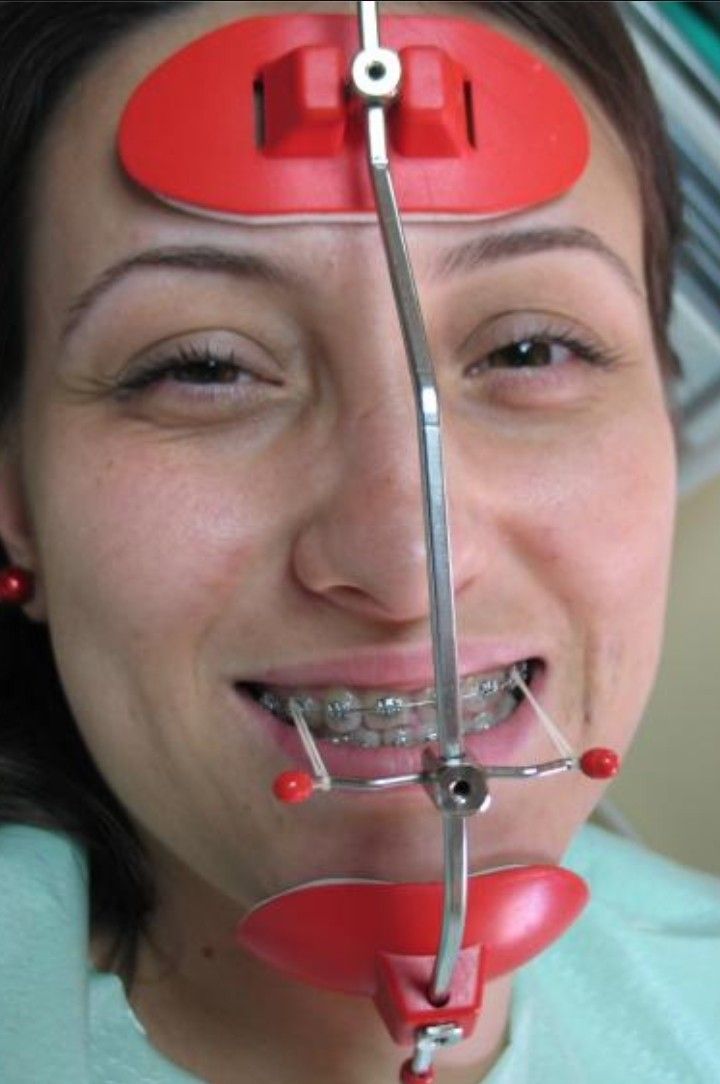Metal Teeth Brace

The concept of metal teeth braces has been a cornerstone of orthodontic treatment for decades, providing a reliable and effective solution for aligning teeth and improving oral health. The principle behind these braces is simple: by applying constant, gentle pressure on the teeth, the braces guide them into the desired position over time. This process not only enhances the aesthetic appeal of the smile but also corrects issues related to bite and chewing functionality.
Evolution of Metal Braces
The evolution of metal teeth braces reflects advancements in dental technology and materials science. Traditional metal braces consist of stainless steel or titanium brackets, wires, and elastic bands that work together to move the teeth. Over the years, significant improvements have been made, including the introduction of smaller, more comfortable brackets and the use of nickel-titanium alloys for the archwires, which provide better springback and can exert a constant force over a wide range of activation.
How Metal Braces Work
Understanding how metal braces work is crucial for appreciating their effectiveness. The process begins with an orthodontic consultation, where customized impressions and scans of the patient’s teeth are taken to design the treatment plan. Once the metal brackets are attached to the teeth, an archwire is threaded through them. The archwire applies pressure to the teeth, guiding them into position. Elastic bands may be used to hold the archwire in place and to apply additional forces in specific directions. Regular adjustments are made over the course of treatment, typically every 4-6 weeks, to tighten the braces and make progress towards the desired alignment.
Innovations in Metal Braces
Innovations in metal braces have focused on enhancing comfort, reducing visibility, and improving treatment efficiency. One of the notable advancements is the development of self-ligating brackets, which do not require elastic bands to hold the archwire in place. This design can lead to faster treatment times, fewer appointments, and less friction, which can cause discomfort. Another significant innovation is the use of Temporary Anchorage Devices (TADs), small screws that are inserted into the jawbone and can be used as anchors to apply additional forces, allowing for more complex movements of the teeth and in some cases, reducing the need for jaw surgery.
Comparison with Other Orthodontic Solutions
Metal braces are often compared with other orthodontic solutions, such as ceramic braces and clear aligners like Invisalign. Ceramic braces offer a more aesthetic option, with brackets made from a clear or tooth-colored material, but they can be more expensive and slightly less durable than metal braces. Clear aligners are removable, virtually invisible, and do not involve brackets or wires, making them a preferred choice for many adults and teens. However, they may not be suitable for complex cases and require excellent compliance, as the aligners must be worn for at least 22 hours a day.
Future Trends
The future of metal braces looks promising, with ongoing research focused on making them more efficient, comfortable, and personalized. Advances in digital orthodontics, including 3D printing and computer-aided design, are revolutionizing the way orthodontic appliances are designed and manufactured. Personalized brackets and custom-made archwires tailored to the individual’s dental anatomy can optimize treatment outcomes and potentially shorten treatment times. Furthermore, the integration of smart technology into orthodontic appliances, such as sensors that monitor the movement of teeth and the forces applied, could provide real-time feedback, allowing for more precise adjustments and better patient outcomes.
Decision Framework for Choosing Metal Braces
For individuals considering orthodontic treatment, the decision to choose metal braces depends on several factors, including the severity of the dental issue, personal preferences regarding appearance and comfort, and budget considerations. Here is a decision framework to consider:
- Assess Your Needs: Determine the complexity of your orthodontic issues. Metal braces are suitable for a wide range of cases, from mild to severe.
- Consider Aesthetics: If visibility is a concern, weigh the options of ceramic braces or clear aligners against the traditional metal braces.
- Evaluate Budget: Metal braces are often the most cost-effective option, but prices can vary based on location, orthodontist expertise, and treatment duration.
- Think About Comfort and Convenience: Metal braces require regular adjustments and can cause initial discomfort. Consider how this fits into your lifestyle.
- Explore Insurance Coverage: Check if your dental insurance covers orthodontic treatment and if there are any specific requirements or limitations.
FAQ Section
How long does treatment with metal braces typically last?
+Treatment duration can vary significantly depending on the complexity of the case, but on average, it can last from 18 to 36 months.
Are metal braces suitable for adults?
+Yes, metal braces are suitable for adults. While orthodontic treatment is often associated with children and teens, many adults undergo successful treatment to improve their dental health and appearance.
Do metal braces hurt?
+While there can be some initial discomfort when the braces are first applied or after adjustments, this typically subsides within a few days. Orthodontic wax can help alleviate any discomfort from rubbing brackets.
How do I care for my teeth while wearing metal braces?
+Caring for your teeth with metal braces involves regular brushing with a fluoride toothpaste, using an interdental brush to clean around the brackets, and avoiding certain foods like sticky candies and nuts that can damage the braces.
Can I play sports or musical instruments with metal braces?
+Yes, you can participate in sports and play musical instruments while wearing metal braces. For sports, wearing a mouthguard is recommended to protect your braces and teeth. For musical instruments, especially brass and wind instruments, adjustments may be needed to accommodate the braces, and consulting with your orthodontist is advised.
In conclusion, metal teeth braces offer a tried and tested method for achieving straighter teeth and a healthier smile. With ongoing innovations in orthodontic technology, patients can expect more comfortable, efficient, and personalized treatment options. By understanding the basics of how metal braces work, their evolution over time, and the factors to consider when deciding on orthodontic treatment, individuals can make informed choices about their dental care and take the first step towards a more confident, healthy smile.



